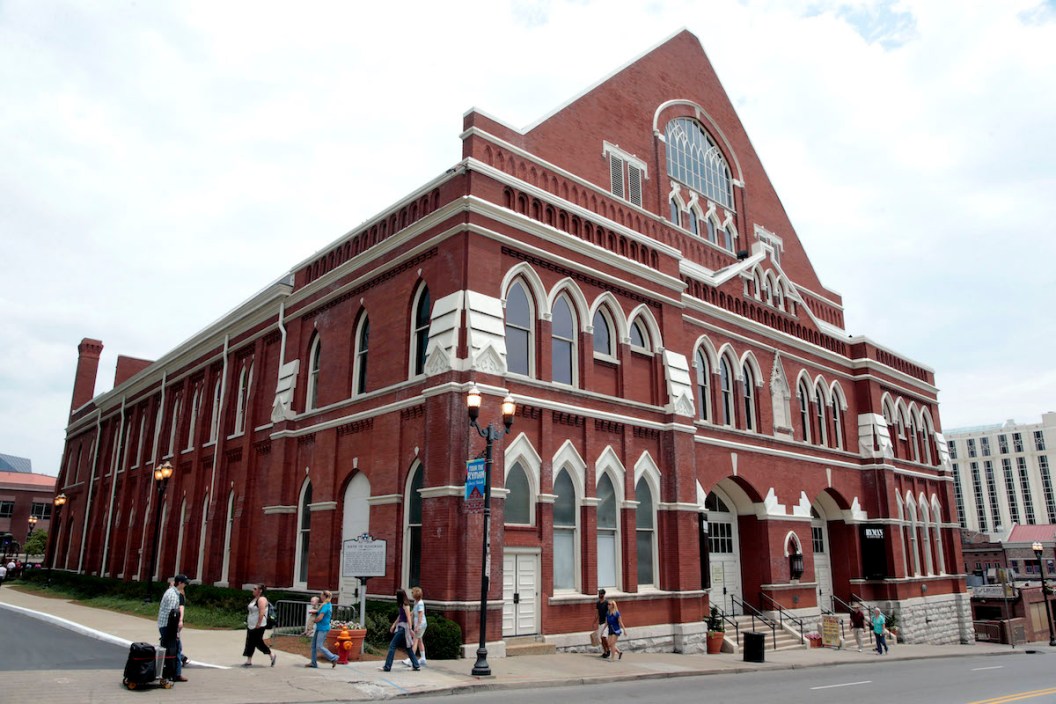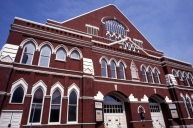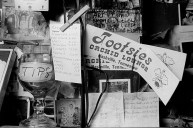[dropcap]I[/dropcap]f you're a country fan who has made it to downtown Nashville, Tennessee, chances are you've at least viewed the outside of gorgeous and historic music venue the Ryman Auditorium. And if you're lucky, you scored tickets to one of the many world-class live music performances inside. Incredibly, many features of the venue remain from its original 19th-century function as a church. But the venue you saw underwent a lot of life-saving in order to remain a fixture in music history.
Videos by Wide Open Country
In fact, if a few famous Nashvillians had their way in years past, the Ryman wouldn't even exist anymore. The venue survived poor workmanship, urban decay and even potential explosions to reemerge as one of the country's greatest cultural bastions.
A Powerful Preacher
Back in the late 1800s, Nashville had a reputation as a wild spot. Thanks to the Cumberland River, travelers could easily gamble and imbibe to their heart's content.
Riverboat Captain Tom Ryman, a well-liked local who happened to make quite a bit of money from that illicit activity, heard the famous Reverend Sam Jones took issue with Nashville's sinful ways. The traveling preacher made a habit of tent revivals, and Ryman planned on showing up at one in town to cause a ruckus.
Legend has it Reverend Jones knew Ryman would attend, so he prepared a sermon particularly for him. So deeply moved by his words, Ryman pledged to build the Reverend his own tabernacle so nobody would need to attend a revival under a tent again.
Jones called it "the best investment the city of Nashville ever made." And it was an investment — one that took seven years and the equivalent of $2.6 million nowadays. Though it officially opened on June 1, 1892, Jones also held an impromptu sermon in 1890 with nothing but a foundation and walls outlining the venue.
Jones and Ryman became good friends; the good Reverend actually wanted to name the building after him. He refused, instead calling it the Union Gospel Tabernacle. But after passing away in 1904, Ryman lost that fight. Jones suggested at his funeral to rename the building in his honor, and the 5,000-plus mourners enthusiastically agreed.
A Church With A Bad Side
So, here's a major dose of irony. While the Ryman Auditorium stood tall as a holy place of worship, it was sinking in debt. The building went over costs during construction. To help pay off debts, the Ryman booked speakers, concerts, boxing matches and other unholy engagements.
READ MORE: Elvis Presley's Graceland Now Offering Live Virtual Tours
Lula C. Naff, a single mother working for a local law firm, took over initially booking the venue. She went by "L.C." to avoid facing prejudicial behavior as a woman in the male-dominated talent buying world. She started intermittently in 1904, but by 1914 found herself the queen of Nashville's entertainment.
In fact, if not for Naff, Music City may never have become the cultural hub it is today. Naff brought in world-renowned talent, eventually garnering the Ryman the new nickname of "Carnegie Hall of the South." Bet you wouldn't guess the first event to sell out the Ryman: a lecture featuring Helen Keller and Anne Sullivan Macy in 1913. Naff continued booking premier talent for decades. Noteworthy performers to take the Ryman stage before it became associated with Hank Williams, Johnny Cash and Patsy Cline include John Philip Sousa, Harry Houdini, Enrico Caruso and local treasure the Fisk Jubilee Singers.
"If we have a Carnegie Hall, this is it." -- Vince Gill
The Grand Ole Opry Needs A New Home
Meanwhile, a little radio program called The Grand Ole Opry got started in the 1920s. Originally based out of the WSM radio studios, the show's popularity grew exponentially by the early '40s. It began moving around to different theaters and venues in town, though several tabernacles refused to let those no-good musicians in a house of worship. But Naff thought it would be perfect.
So, on June 5, 1943, the Ryman Auditorium opened its doors to the Grand Ole Opry, starting its legendary 30-year tenure as the home for America's most famous musical program. That's when the venue really earned its nickname, "The Mother Church Of Country Music."
Though by the look of the rowdy crowds (known for sometimes tearing at curtains), you wouldn't necessarily think them church-going folk. But much like music institutions throughout the rest of the South, the Ryman became a place where the Jim Crow segregation laws didn't matter, with black and white people routinely mingling amongst each other to enjoy the music. For many, the Ryman marked the true birthplace of bluegrass music, too.
READ MORE: Just So Proud to Be Here: Celebrating the Life and Legacy of Minnie Pearl
Uncertain Times
As nice as it would be to say the Ryman remained the popular home of the Grand Ole Opry from then on out, it's simply not true. In fact, the dirty little secret about the Ryman during its tenure as the home of the Grand Ole Opry is: it wasn't a great fit. The backstage area was cramped. Women changed in the bathroom instead of dressing rooms. It couldn't accommodate increasing technological needs for radio and television.
Oh, and there wasn't any air conditioning.
In fact, the cramped backstage area and sweltering heat usually led artists to wait out in the alley — which is how Lower Broadway honky-tonks like Tootsie's Orchid Lounge gained a reputation as an artist hangout.
So in 1969, National Life Insurance (the company that owned WSM and the Ryman; long story) announced plans for a new, state-of-the-art facility specifically for the Opry. Unfortunately, the Opry departing the Ryman for the new Grand Ole Opry House in 1974 also signified a period of serious urban decay in downtown Nashville.
WSM also announced plans to raze the Ryman as it developed the massive Opryland USA entertainment park. Much of the creative community went up in arms at the suggestion of destroying a nearly 100-year old piece of American cultural history.
Some major players in town actually wanted to knock it down, too. Roy Acuff famously stated, "I never want another note of music played in that building." Yikes. The public clearly felt differently, urging their United States Senators to convince National Life Insurance to save the building.
The plan worked, but it basically just sat there slowly rotting (and hosting backstage tours). In 1979, it was about 20 minutes away from being demolished in a bomb plot targeting a nearby strip club. Bomb squads disarmed the 400-pound car bomb with only minutes to spare. The Ryman's ownership underwent changes while the building served as a filming location for several films. But the former church at 116 5th Avenue North sat quiet. Until...
Emmylou to the Rescue
In 1991 and 1992, Emmylou Harris performed a series of shows titled At The Ryman. Harris filmed and recorded the acoustic performances in front of a crowd of about 200 people. There would've been more, you see, but parts of the building were condemned and nobody was allowed to sit under the balcony.
Hers were the first concerts in the Ryman since 1974. The performance garnered universal acclaim and, to many, singlehandedly inspired interest in revitalizing the venue. At the time, its owners only focused on a renovating the exterior, with little to no interest in taking advantage of the old building's acoustics.
But shortly after Harris' concerts, owners Gaylord Entertainment executives announced plans to renovate the building for performances. And that took a lot of work; the original pews needed refurbishing, and much of the supports for the stage and building required serious reinforcement or replacement.
In 1998, the Grand Ole Opry returned to the Ryman for a limited engagement, which continues to this day. The Ryman breathed life into a decaying downtown, turning it once again into a destination for tourists from around the world.
The venue now hosts a litany of some of the most talented acts from all genres of music. It also received another breathtaking $14 million renovation and expansion in 2015 (that includes Cafe Lula, named in honor of L.C. Naff).
And most importantly, shows at the Ryman are a completely surreal experience. They feel holy, even in the most secular of ways. You can't really dance, thanks to the pews, but there's not a bad seat in the house. The sound is phenomenal, and there's a reverence among both audience and performer that makes the Ryman Auditorium unlike any other venue in the world.
The Ryman Auditorium was included in the National Register of Historic Places in 1971 and was later designated a National Historic Landmark on June 25, 2001.
[sweeps]
This story first ran on Dec. 8, 2017.




